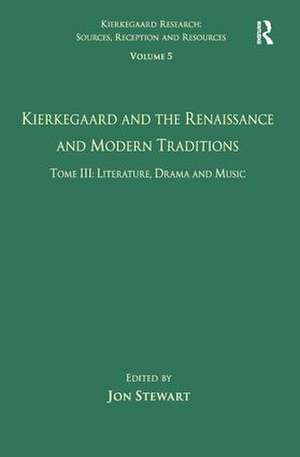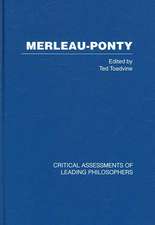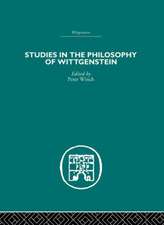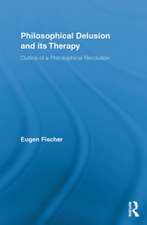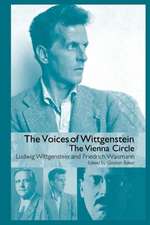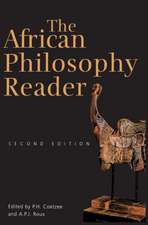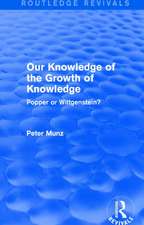Volume 5, Tome III: Kierkegaard and the Renaissance and Modern Traditions - Literature, Drama and Music: Kierkegaard Research: Sources, Reception and Resources
Editat de Jon Stewarten Limba Engleză Hardback – 14 aug 2009
| Toate formatele și edițiile | Preț | Express |
|---|---|---|
| Paperback (1) | 329.88 lei 6-8 săpt. | |
| Taylor & Francis – 28 noi 2016 | 329.88 lei 6-8 săpt. | |
| Hardback (1) | 703.76 lei 6-8 săpt. | |
| Taylor & Francis – 14 aug 2009 | 703.76 lei 6-8 săpt. |
Din seria Kierkegaard Research: Sources, Reception and Resources
-
 Preț: 325.78 lei
Preț: 325.78 lei -
 Preț: 386.78 lei
Preț: 386.78 lei - 18%
 Preț: 1055.21 lei
Preț: 1055.21 lei - 18%
 Preț: 1065.78 lei
Preț: 1065.78 lei - 26%
 Preț: 820.71 lei
Preț: 820.71 lei - 18%
 Preț: 1064.19 lei
Preț: 1064.19 lei - 18%
 Preț: 1060.87 lei
Preț: 1060.87 lei - 25%
 Preț: 826.15 lei
Preț: 826.15 lei - 18%
 Preț: 1065.96 lei
Preț: 1065.96 lei -
 Preț: 469.34 lei
Preț: 469.34 lei - 18%
 Preț: 1056.95 lei
Preț: 1056.95 lei - 18%
 Preț: 1117.49 lei
Preț: 1117.49 lei - 18%
 Preț: 1054.71 lei
Preț: 1054.71 lei - 18%
 Preț: 1116.27 lei
Preț: 1116.27 lei -
 Preț: 381.28 lei
Preț: 381.28 lei - 26%
 Preț: 765.59 lei
Preț: 765.59 lei - 25%
 Preț: 825.63 lei
Preț: 825.63 lei - 26%
 Preț: 820.32 lei
Preț: 820.32 lei -
 Preț: 469.34 lei
Preț: 469.34 lei - 18%
 Preț: 1061.81 lei
Preț: 1061.81 lei - 18%
 Preț: 1062.31 lei
Preț: 1062.31 lei - 18%
 Preț: 1059.18 lei
Preț: 1059.18 lei - 18%
 Preț: 1057.57 lei
Preț: 1057.57 lei - 18%
 Preț: 1057.75 lei
Preț: 1057.75 lei - 18%
 Preț: 1057.89 lei
Preț: 1057.89 lei -
 Preț: 489.26 lei
Preț: 489.26 lei - 30%
 Preț: 768.82 lei
Preț: 768.82 lei - 18%
 Preț: 1116.77 lei
Preț: 1116.77 lei - 18%
 Preț: 1112.03 lei
Preț: 1112.03 lei - 18%
 Preț: 1067.35 lei
Preț: 1067.35 lei - 18%
 Preț: 1056.00 lei
Preț: 1056.00 lei - 18%
 Preț: 1058.65 lei
Preț: 1058.65 lei - 31%
 Preț: 767.80 lei
Preț: 767.80 lei - 18%
 Preț: 1064.98 lei
Preț: 1064.98 lei - 25%
 Preț: 769.44 lei
Preț: 769.44 lei - 18%
 Preț: 1058.86 lei
Preț: 1058.86 lei - 26%
 Preț: 820.32 lei
Preț: 820.32 lei - 25%
 Preț: 823.17 lei
Preț: 823.17 lei - 26%
 Preț: 821.94 lei
Preț: 821.94 lei - 28%
 Preț: 821.53 lei
Preț: 821.53 lei - 18%
 Preț: 1060.25 lei
Preț: 1060.25 lei - 18%
 Preț: 1055.84 lei
Preț: 1055.84 lei - 26%
 Preț: 850.73 lei
Preț: 850.73 lei - 18%
 Preț: 1054.71 lei
Preț: 1054.71 lei - 25%
 Preț: 854.26 lei
Preț: 854.26 lei
Preț: 703.76 lei
Preț vechi: 827.96 lei
-15% Nou
Puncte Express: 1056
Preț estimativ în valută:
134.66€ • 141.35$ • 111.77£
134.66€ • 141.35$ • 111.77£
Carte tipărită la comandă
Livrare economică 11-25 aprilie
Preluare comenzi: 021 569.72.76
Specificații
ISBN-13: 9780754668206
ISBN-10: 0754668207
Pagini: 306
Dimensiuni: 156 x 234 x 19 mm
Greutate: 0.61 kg
Ediția:1
Editura: Taylor & Francis
Colecția Routledge
Seria Kierkegaard Research: Sources, Reception and Resources
Locul publicării:Oxford, United Kingdom
ISBN-10: 0754668207
Pagini: 306
Dimensiuni: 156 x 234 x 19 mm
Greutate: 0.61 kg
Ediția:1
Editura: Taylor & Francis
Colecția Routledge
Seria Kierkegaard Research: Sources, Reception and Resources
Locul publicării:Oxford, United Kingdom
Cuprins
Contents: Lord George Gordon Byron: seduction, defiance and despair in the works of Kierkegaard, Bartholomew Ryan; Miguel de Cervantes: the valuable contribution of a minor influence, Óscar Parcero Oubiña; François-René de Chateaubriand: the eloquent society of Symparanekromenoi , Ingrid Basso; Johannes Ewald: poetic fire, Kim Ravn; Ludvig Holberg: Kierkegaard's unacknowledged mentor, Julie K. Allen; Alphonse de Lamartine: the movement 'en masse' versus the individual choice, Ingrid Basso; Prosper Merimée: a new Don Juan, Nataliya Vorobyova; Molière: an existential vision of authenticity in man across time, Jeanette Bresson Ladegaard Knox; Wolfgang Amadeus Mozart: the love for music and the music of love, Elisabete M. de Sousa; Eugène Scribe: the unfortunate authorship of a successful author, Elisabete M. de Sousa; William Shakespeare: Kierkegaard's post-romantic reception of 'the poet's poet', Joel D.S. Rasmussen; Percy Bysshe Shelley: anxious journeys, the demonic, and 'breaking the silence', Bartholomew Ryan; Richard Brinsley Sheridan: a story of one review - Kierkegaard on The School for Scandal, Nataliya Vorobyova; Johan Herman Wessel: Kierkegaard's use of Wessel, or the crazier the better, Tonny Aagaard Olesen; Edward Young: Kierkegaard's encounter with a proto-romantic religious poet, Joseph Ballan; Indexes.
Notă biografică
Jon Stewart is an Associate Research Professor in the Søren Kierkegaard Research Centre at the University of Copenhagen, Denmark.
Descriere
The long period from the Renaissance to the nineteenth century supplied numerous sources for Kierkegaard's thought in any number of different fields. The present volume covers the period from the birth of Savonarola in 1452 through the beginning of the nineteenth century and into Kierkegaard's own time. The Danish thinker read authors representing vastly different traditions and time periods, and a diverse range of genres including philosophy, theology, literature, drama and music. The present volume consists of three tomes that are intended to cover Kierkegaard's sources in these different fields of thought.Tome III covers the sources that are relevant for literature, drama and music.
